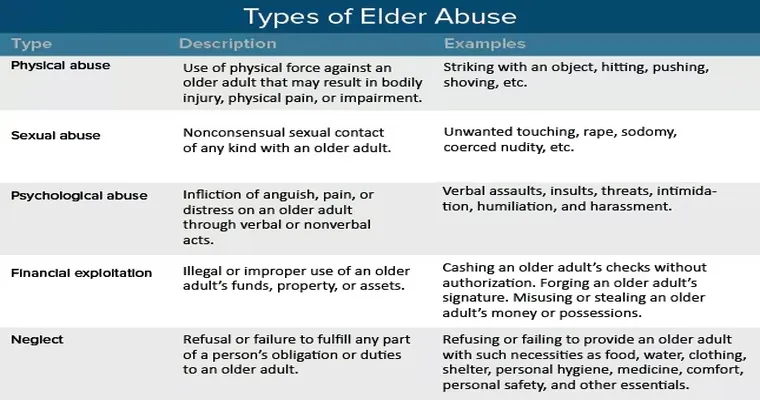Elder abuse is a serious issue that affects millions of older adults worldwide. It comes in various forms, including "physical abuse", "emotional abuse", "financial exploitation", "neglect", and "sexual abuse". Understanding these five types of elder abuse is crucial for prevention and ensuring the safety and well-being of our elderly loved ones.
1. Physical Abuse
Physical abuse involves the use of force that may result in bodily injury, pain, or impairment. This can include hitting, pushing, or restraining an elder. Signs of physical abuse may include unexplained bruises, fractures, or changes in behavior. To prevent physical abuse, it is essential to foster open communication, educate caregivers about appropriate care techniques, and monitor interactions between caregivers and seniors.
2. Emotional Abuse
Emotional abuse is characterized by verbal assaults, threats, humiliation, or intimidation that can lead to psychological harm. Victims may experience anxiety, depression, or withdrawal from social activities. Preventing emotional abuse requires awareness and education about the importance of respectful communication. It is vital to ensure that elders are surrounded by supportive relationships and to encourage them to speak openly about their feelings.
3. Financial Exploitation
Financial exploitation occurs when someone improperly uses an elder's funds or assets for their own benefit. This can include stealing money, forging signatures, or coercing an elder into financial decisions. To prevent financial exploitation, family members should maintain an active role in their loved one's financial management. Regularly reviewing bank statements and having open discussions about finances can help protect seniors from potential scams and exploitation.
4. Neglect
Neglect is the failure to provide adequate care, resulting in harm to an elder's health or well-being. This can include inadequate nutrition, medical care, or supervision. Signs of neglect may include malnutrition, poor hygiene, or untreated medical conditions. Preventing neglect involves regular check-ins with the elder and ensuring that caregivers are adequately trained and supported. Families should also be vigilant about the living conditions and overall well-being of their loved ones.
5. Sexual Abuse
Sexual abuse involves non-consensual sexual contact of any kind with an elder. This type of abuse can be particularly challenging to identify due to the stigma surrounding it. Signs may include unexplained injuries or changes in behavior. To prevent sexual abuse, it is vital to educate both caregivers and seniors about consent and appropriate boundaries. Additionally, ensuring a safe and trusting environment can help elders feel comfortable reporting any inappropriate behavior.
Conclusion
Understanding the different types of elder abuse is essential in safeguarding our elderly loved ones. By being vigilant and proactive, we can help prevent these abuses from occurring. Open communication, education, and regular monitoring are key strategies in ensuring that our seniors live in a safe and supportive environment. Together, we can make a significant difference in the fight against elder abuse.





